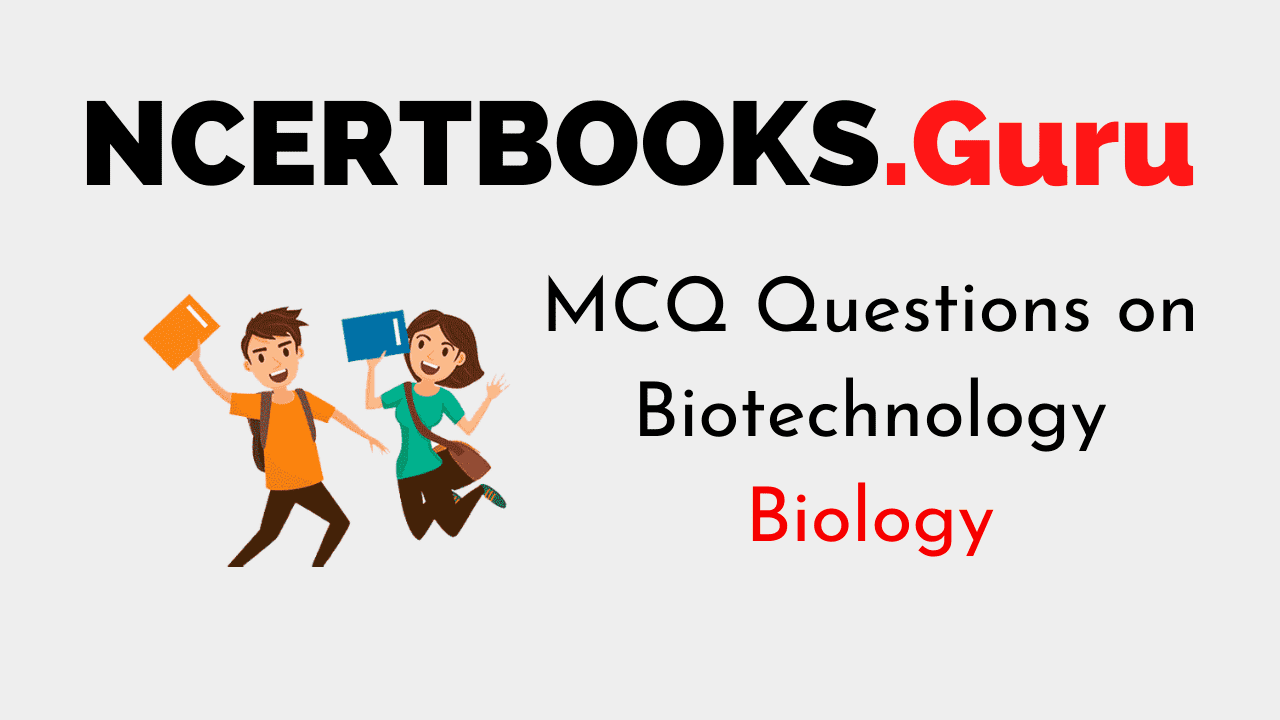MCQ Questions on Biotechnology
1. Restriction enzymes were discovered by
(a) Smith and Nathans
(b) Alexander Fleming
(c) Berg
(d) None
Answer
Answer: (a) Smith and Nathans
2. Bacteria protect themselves from viruses by fragmenting viral DNA with
(a) Ligase
(b) Endonuclease
(c) Exonuclease
(d) Gyrase
Answer
Answer: (b) Endonuclease
3. Klenow fragment is derived from
(a) DNA Ligase
(b) DNA Pol-I
(c) DNA Pol-II
(d) Reverse Transcriptase
Answer
Answer: (b) DNA Pol-I
4. Southern blotting is
(a) Attachment of probes to DNA fragments
(b) Transfer of DNA fragments from electrophoretic gel to a nitrocellulose sheet
(c) Comparison of DNA fragments to two sources
(d) Transfer of DNA fragments to electrophoretic gel from cellulose membrane
Answer
Answer: (b) Transfer of DNA fragments from electrophoretic gel to a nitrocellulose sheet
5. ELISA is
(a) Using radiolabelled second antibody
(b) Usage of RBCs
(c) Using complement-mediated cell lysis
(d) Addition of substrate that is converted into a coloured end product
Answer
Answer: (d) Addition of substrate that is converted into a coloured end product
6. The Golden Rice variety is rich in
(a) Vitamin C
(b) Β-carotene and ferritin
(c) Biotin
(d) Lysine
Answer
Answer: (b) Β-carotene and ferritin
7. The DNA fragments have sticky ends due to
(a) Endonuclease
(b) Unpaired bases
(c) Calcium ions
(d) Free methylation
Answer
Answer: (b) Unpaired bases
8. Plasmids are used as cloning vectors for which of the following reasons?
(a) Can be multiplied in culture
(b) Self-replication in bacterial cells
(c) Can be multiplied in laboratories with the help of enzymes
(d) Replicate freely outside bacterial cells
Answer
Answer: (b) Self-replication in bacterial cells
9. The human genome project was launched in the year
(a) 1980
(b) 1973
(c) 1990
(d) 1989
Answer
Answer: (c) 1990
10. The vaccines prepared through recombinant DNA technology are
(a) Third generation vaccines
(b) First-generation vaccines
(c) Second-generation vaccines
(d) None
Answer
Answer: (a) Third generation vaccines
11. Which is a genetically modified crop?
(a) Bt-cotton
(b) Bt-brinjal
(c) Golden rice
(d) All
Answer
Answer: (d) All
12. PCR technique was invented by
(a) Karry Mullis
(b) Boyer
(c) Sanger
(d) Cohn
Answer
Answer: (a) Karry Mullis
13. The first transgenic plant to be produced is
(a) Brinjal
(b) Tobacco
(c) Rice
(d) Cotton
Answer
Answer: (b) Tobacco
14. RNA interference helps in
(a) Cell proliferation
(b) Micropropagation
(c) Cell defence
(d) Cell differentiation
Answer
Answer: (c) Cell defence
15. Which of the following is the quality of improved transgenic basmati rice?
(a) Gives high yield but no characteristic aroma
(b) Gives high yield and is rich in vitamin A
(c) Does not require chemical fertilizers and growth hormones
(d) Resistant to insects and diseases
Answer
Answer: (b) Gives high yield and is rich in vitamin A
16. The first clinical application of gene therapy over a 4 year old girl was for
(a) Adenosine deaminase deficiency
(b) Adenosine deficiency
(c) Growth deficiency
(d) Adenine deficiency
Answer
Answer: (a) Adenosine deaminase deficiency
17. Excision and insertion of a gene is called
(a) Biotechnology
(b) Genetic engineering
(c) Cytogenetics
(d) Gene therapy
Answer
Answer: (b) Genetic engineering
18. The expression of a transgene in the target tissue is identified by a
(a) Transgene
(b) Promoter
(c) Enhancer
(d) Reporter
Answer
Answer: (d) Reporter
19. _______ is used as a vector for cloning into higher organisms
(a) Retrovirus
(b) Baculovirus
(c) Salmonella typhimurium
(d) Rhizopus nigricans
Answer
Answer: (a) Retrovirus
20. Which bacterium is used in the production of insulin by genetic engineering?
(a) Saccharomyces
(b) Rhizobium
(c) Escherichia
(d) Mycobacterium
Answer
Answer: (c) Escherichia
